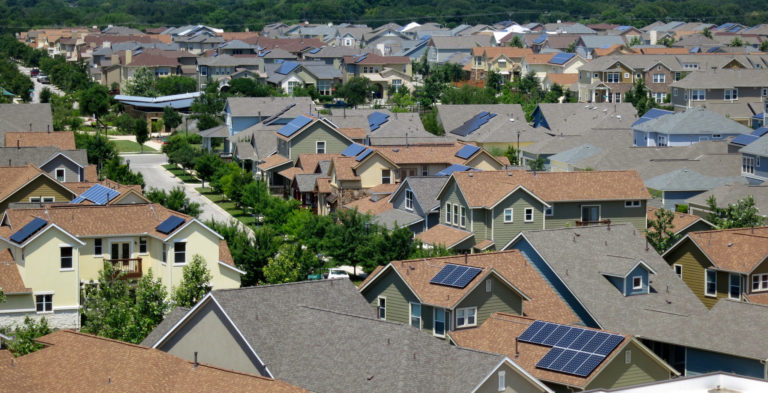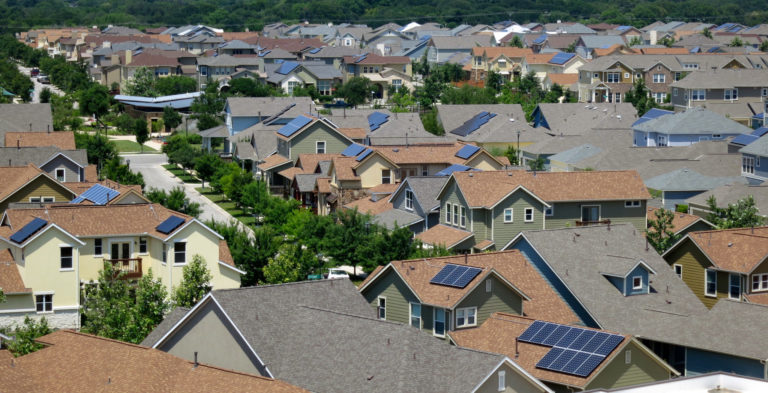June 11, 2020
Unlocking Insights: How COVID-19 & SIP are Shifting Behaviors & Home Energy Use


By Rachel Jenkins, Director of Operations &
Clayton Johnson, Communications Coordinator
Over the past few months, Pecan Street used data from its volunteer research network to provide high-resolution, timely analysis of how residential energy use patterns are shifting in response to COVID-19 Shelter-In-Place (SIP) policies. Our homes are now more than shelter: they are our schools, our offices, and in many cases, a critical part of the healthcare infrastructure. Determining how households are adapting to these changes in lifestyle and how our adaptations affect the electric grid is critical as we enter the hot summer months that already stress many household’s pocketbooks and the grid’s capacity.
In Their Own Words: Volunteer Network Survey Provides Personal Insights into SIP
We also surveyed participants to learn what behavioral changes might be affecting their energy profile. Have they invested in technologies that have made their extra time at home easier? Do they want other products but can’t find them? What other kinds of products and services could companies offer to ease the transition to shelter-in-place?
We also wanted to understand if participants’ perceptions of their energy use and energy bills are accurate and whether they are proactively trying to manage their energy use while they spend more time at home.
The survey findings are from residents in our network representing approximately 360 homes across Texas, California and New York. Nearly 63% of participants have rooftop solar and nearly 32% charge an electric vehicle at home.
It is important to note that our network does not represent the average American household. All the homes in this research network are single-family, owner-occupied, homes and most participants’ income is well above the national median. These participants also tend to be early adopters of consumer technology, distributed renewable energy and electric transportation options.
The majority of survey respondents – 87% – are sheltering at their full-time residence, and 69% of respondents have more individuals at home during the day than before SIP took effect. Respondents indicated that 64% of homes have children ages 0-12 and 58% have children ages 13-17. Unsurprisingly, the increased occupancy has resulted in respondents reporting an increase in overall energy consumption.
Energy Use Under Shelter-in-Place
Pecan Street has been monitoring electricity use and generation from hundreds of homes in our research network for nearly a decade. These homes provide insights into total home energy use, electric vehicle charging patterns, and individual appliance energy use, including HVAC systems, lighting, and individual appliances.
The Shelter-in-Place participant survey was issued to provide a broader context for the changes that we are seeing in our participant network by supplementing the data our sensors collect with insights from the homeowners themselves.
In short, the majority of participants:
- know they are using more energy;
- they are not actively trying to reduce their energy use;
- and they are making new purchases to increase comfort, entertainment options, and productivity at home.
The survey revealed that over 75% of respondents have thought about the impacts on their energy use due to SIP, and over 80% believe their home energy use has gone up since SIP began. A small percentage of respondents reported logging into their energy monitoring systems (provided by Pecan Street when they first joined our research network) more frequently than they did prior to SIP. Of those, nearly 61% saw an increase in their usage. Those who are monitoring their use may be more likely to adjust their usage accordingly, and Pecan Street’s next analysis will explore whether there is a relationship between frequent monitoring of energy use and lower energy use/bills.
Despite the overwhelming response indicating a belief that energy use has increased, only 21% say they have changed their habits to mitigate this increase. These changes included adjusting the thermostat, turning off lights, and shifting when they do laundry to coincide with when their PV systems produce energy. At the time of the survey, most respondents had been sheltering in place for less than two months and had likely not received a utility bill for a full billing cycle under SIP. It remains to be seen to what extent increased utility bills will affect energy use habits going forward. Read more about our previous analysis of utility bills under SIP here.
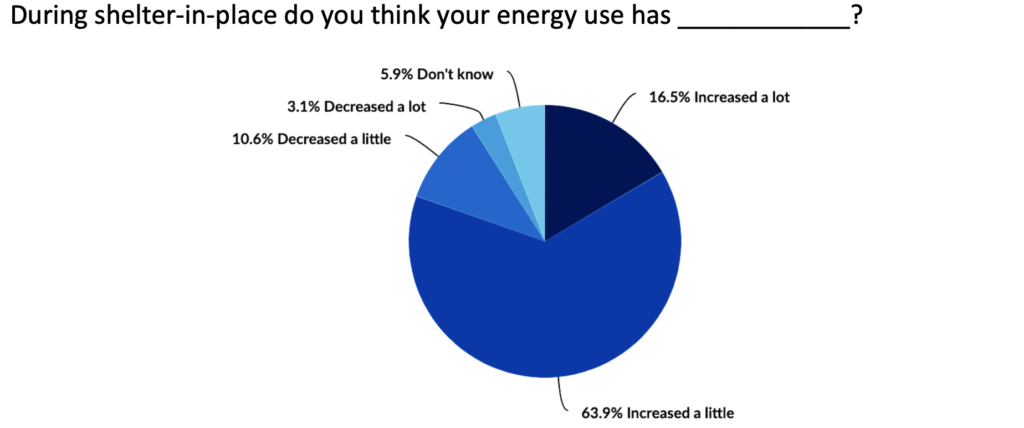
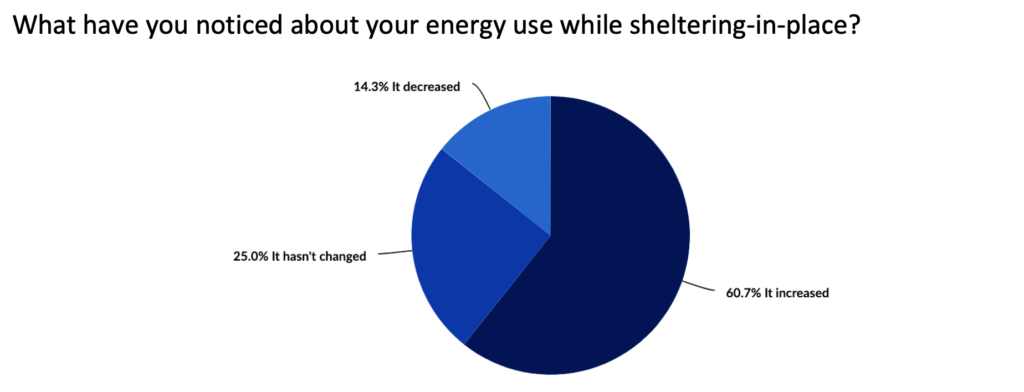
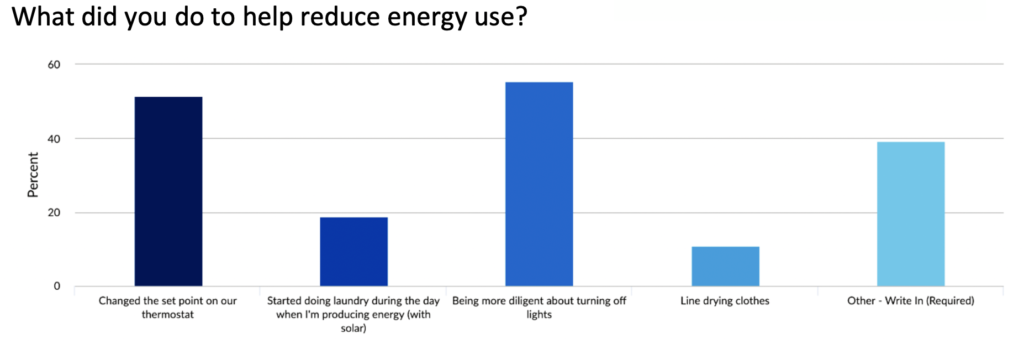 Lifestyle
Lifestyle
Pecan Street’s ability to collect circuit-level energy use data provides detailed and valuable insights into COVID-19 lifestyle changes. Participant energy data show that participants are waking up later and going to sleep later, reflecting energy usage patterns more typical of the weekend. It comes as no surprise that participants are also using refrigerators and other kitchen appliances up to 30% more than in previous months.
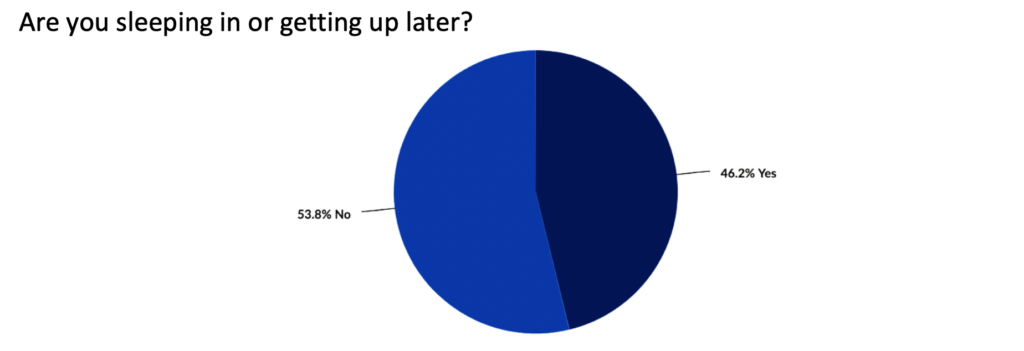
Survey responses confirmed that households are shifting schedules (46% reported a change) as well as changes in cooking habits (76% reported a change), and increased purchases of various categories of home technologies. Additionally, over 50% of respondents had canceled travel plans for March and April. And with so much extra time spent at home, 18% of respondents have undertaken home improvement projects, such as painting, repair work, replacing windows, building porches, and landscaping projects.
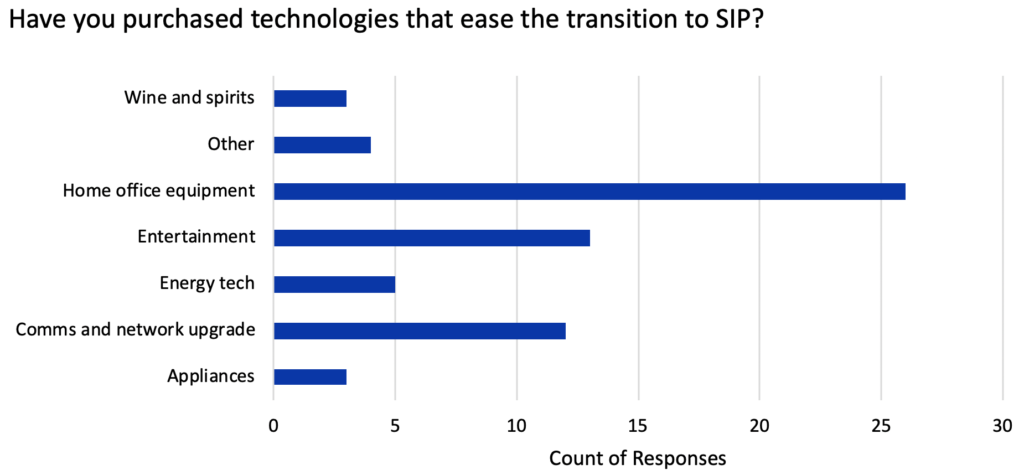
Most respondents also reported purchasing technologies to ease their transition into extended SIP. Many purchased new electronic devices such as tablets, phones, computers, monitors, printers, and headsets to help their families work and study from home. Many have also upgraded their internet service and signed up for new streaming and other online entertainment services. Other households invested in-home exercise equipment, and some made sure there was plenty of wine and whiskey on hand.
For additional analysis and further insight into Pecan Street’s research please contact us at info@pecanstreet.org or visit our website: www.pecanstreet.org









